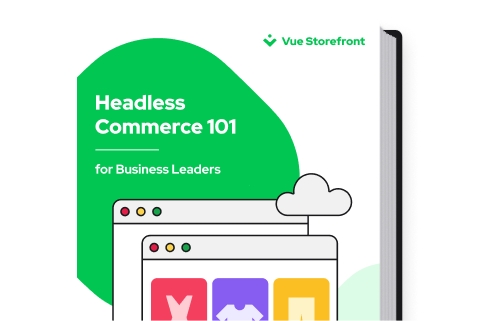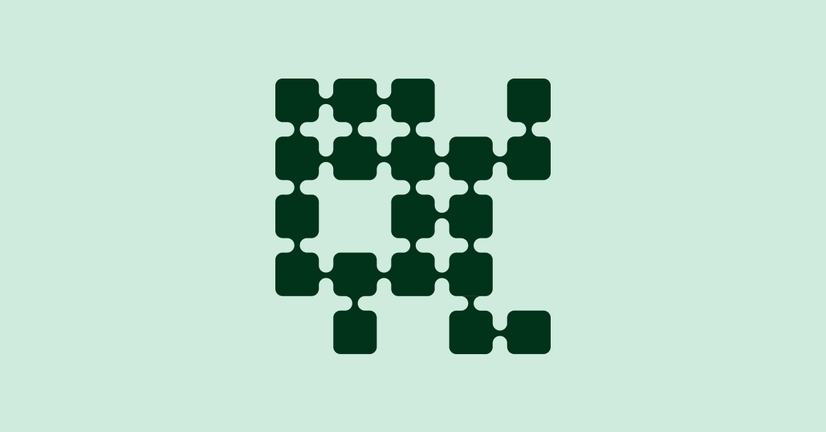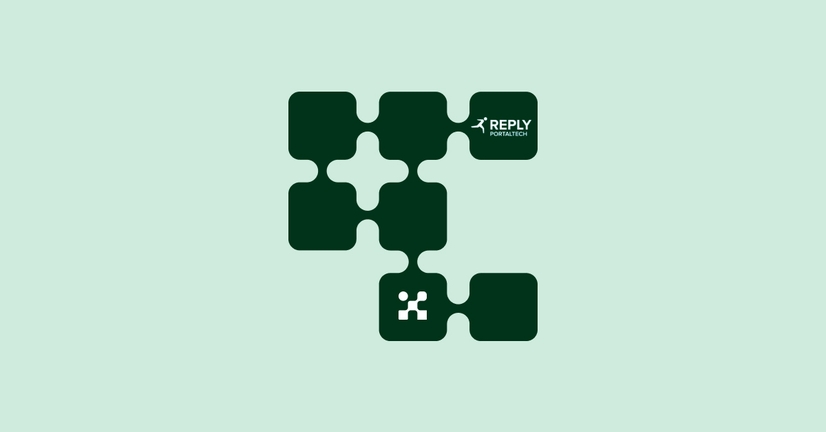Explore by Category:
Headless Commerce
7 Exceptional Examples of Headless CMS
The development of headless CMS technologies is very dynamic. New headless CMS examples are constantly appearing in SaaS or open source models supported by thousands of developer communities.
Are you looking for exceptional examples of headless CMS to build your perfect headless stack ? You’re in the right place! In this article, we inspect the most popular headless CMS examples which you can easily integrate with Alokai.
But first, let’s quickly cover some basic information about headless CMS.
What is a headless CMS?
The Headless Content Management System equips content specialists with a content management interface, and at the same time it provides developers with an API for building applications.
Headless CMS separates the visual layer - frontend (head) from the backend - content repository and data (body). It provides prepared data via API, so it allows you to send your content to a separate presentation layer.
The content structure (or schema) is designed once for each content type using the Headless CMS User Interface. A related component is then developed in your application. A content editor then simply creates content using the available schemas, typically with a live preview. When the content is saved it is delivered as JSON to the frontend and populates the appropriate component.
There is no need for business teams to touch code.
With a headless CMS on board each department of the company can adapt the tool to their needs at a much lower cost and in a shorter time than in case of a traditional CMS.
Headless CMS use cases
E-commerce businesses require constant changes, testing and experimentation. Moreover, you should constantly optimize what works and remove unnecessary things from your website.
This is a particularly important change in the face of omnichannel sales, when there are so many channels of customer contact with the brand. In the case of a traditional CMS it was not possible to orchestrate them from one place.
However, using a headless CMS, you can use your content across a wide variety of channels, applications, or devices. Each of these may use different technologies and have a unique architecture, for example a website, an iOS application, and an info-kiosk.
Headless CMS are often made available in the SaaS model, thanks to which the backend part of the project often does not require programming work at all. In addition, integration with the frontend is pretty smooth thanks to solutions such as Alokai.
If you are willing to learn more about how headless CMS wins with a traditional CMS, take a look at the article Headless CMS vs. Traditional CMS .
Brief retrospective on headless commerce – how it all started?
As we already mentioned before, the shopping path of today includes more and more touchpoints such as social media, newsletters or the Internet of Things. This is why it's so complex for ecommerce marketers to build a coherent omnichannel path. How to deal with this challenge?
For many years, merchants believed that it was best to create dedicated all-in-one (monolithic) IT systems. They were supposed to ensure a successful path to efficient sales operations and meeting customer expectations. However, it turned out to be a huge mistake that made the ecommerce business suffer from poor web performance and no flexibility at all.
To help the eCommerce industry improve their performance score, headless commerce approach offers just the opposite.
Instead of creating a single solution that appears to meet your expectations but is burdened with the load of already implemented changes and higher maintenance costs, you can use a set of independent, specialized applications that work together within a single API-based integration architecture.
Headless components and architecture – what you need to know
A strong basis for a successful headless commerce stack comprises of a headless commerce platform , a headless CMS and a headless frontend. They are all connected via API.
The whole headless commerce architecture is based on the concept of API-first approach. Thanks to this, you are completely independent of a single provider and if necessary, you can replace your technology pretty easily.
To discuss headless architecture , let’s establish what are the three main components of each website. These are:
- Front-end - a layer visible to the user, in which all information is transferred, the entire graphic interface
- Back-end - the layer by which it is possible to manage the correct operation of the website
- Database - a container that stores all kinds of data on prices, descriptions, graphics, names, etc.
Traditional (monolithic) solutions usually use a combination of all three components within the same platform. Headless commerce, on the other hand, allows the front-end to work separately and independently from the other parts.
This way you can put both parts of the application on different servers and easily separate their load. Additionally, by using Alokai you can combine numerous 3-rd party headless solutions that work best for your online store. Do you feel stuck in the technology imposed by your traditional monolithic system? There’s no need for that anymore.
Thanks to the headless commerce approach, front-end and back-end specialists can update and work both quickly and independently. One team does not have to wait for the results of the other's work.
Headless CMS examples to monitor
The number of headless CMS examples on the market is constantly growing. To be able to illustrate that, let’s look at some data from The Insight Partners report . According to this white paper, the compound annual growth rate (CAGR) of headless CMS solutions is expected to grow by 22.6% from 2020 to 2027. As you can see, this is huge!
Some of the headless CMS examples seem to have been developed for the Internet of Things (smartphones, smartwatches, fitbands), while others are being rebranded to adapt to market changes as much as possible. Here are some standout headless CMS examples to consider when looking for the right fit to your business.
All of them connect to Alokai, which guarantees a smooth information flow between a chosen headless CMS and the front-end layer of the website. To find out more, visit our
Contentful
Contentful is a headless CMS that works with all static page generators. The biggest advantage of Contentful as a headless CMS is undoubtedly the integration of many content publishing tools in one place.
Additionally, its interface has been designed with both experienced and non-technical users in mind. Most times, this means the possibility of publishing any content without interfering with the code. This tool relieves programmers from the need to build a content infrastructure practically from scratch, which saves a lot of time and significantly speeds up work on creating applications.
Contentful uses instant CDN (Content Delivery Networks) networks, which enable extremely fast and smooth content delivery even in remote locations and with a high load.
It is recommended for teams without frequent access to developers, who work in international markets.
Take a look at the case study of Pure Daily Care , where Alokai, Contentful and Shopify joined forces.
Storyblok
Storyblok is a headless CMS example with a visual editor for developers, marketers, and content editors. It helps your team tell your story and manage content for any use case: enterprise websites, e-commerce, help desks, mobile apps, and screen displays.
Storyblok offers an easy-to-use page builder with a modern headless architecture behind it. This gives the developer freedom and the editor a self-explanatory, intuitive interface. It also offers A/B testing features.
Storyblok offers as well optional content workflows and scheduled content releases.
It will be a superb choice for startups, as you can customize every component according to your needs and create content for an international audience.
Contentstack
Contentstack is a headless CMS that offers RESTful APIs. Its features include content previews, collaboration, asset management, workflow management, and versioning.
Contentstack helps you speed up content personalization, optimization, and publishing across multiple digital devices and channels. Additionally, it offers turnkey integrations for Salesforce, Eloqua, Marketeo, and third-party apps.
Contentstack is the perfect CMS for larger websites that will add omnichannel support. It’s also great for websites that require customized designs.
Bloomreach
Bloomreach offers three solutions, including Bloomreach Experience Cloud, Bloomreach Search & Merchandising and Bloomreach Experience Manager. Bloomreach's commerce-focused platforms run on a headless commerce solution. They enable marketers to optimize and personalize commerce and content experiences with headless API s to give developers flexibility.
Bloomreach offers an overview and filtering of a full sales funnel.
It’s a perfect fit for e-commerce businesses operating in retail, manufacturing, distribution, hospitality, and transportation.
Amplience
Amplience is the leading commerce and CMS platform for enterprise and high-growth retailers and brands, both
B2B
and
B2C
. It combines a single, centralized, collaborative user interface with modern MACH technologies to deliver high performance.
It’s recommended for smaller companies that want one tool for all – it optimizes product page content, media, as well as assets, and managing marketing campaigns.
Magnolia
Magnolia CMS is an open source headless CMS with features for hyper-personalization of content, digital asset management, campaign management and marketer-friendly interfaces. This is a low-code platform.
Magnolia is web content management for mid-market and large enterprises. It is the perfect system for complex websites with dozens of supported languages. Interdisciplinary teams with diverse roles will definitely appreciate it.
LexasCMS
LexasCMS is a new headless CMS with a focus on e-commerce. It provides e-commerce integrations and tools for content personalization, visual previews, and scheduled content changes. The content delivery API supports both GraphQL and REST API so delivering data to the frontend is quite smooth.
These headless CMS focuses on e-commerce with personalised promotions and recommendations. LexasCMS offers direct integrations with e-commerce platforms.
Exceptional Headless CMS examples – are you ready to choose your stack?
Headless technologies offer a number of modern solutions, tailored to the needs of multi-channel sales. In the case of Headless CMS, it is difficult to unambiguously select the one that is the most popular or the best. They are focused on specific use cases, types of business or the size of the company.
When making your choice, go through the documentation, take a look at the case studies and talk to sales representatives. If you need help to choose the best headless CMS which integrates with Alokai, contact us .
Share:
Share:
Frequently asked questions
More in Headless Commerce
Ready to dive in? Schedule a demo
Get a live, personalised demo with one of our awesome product specialists.






















